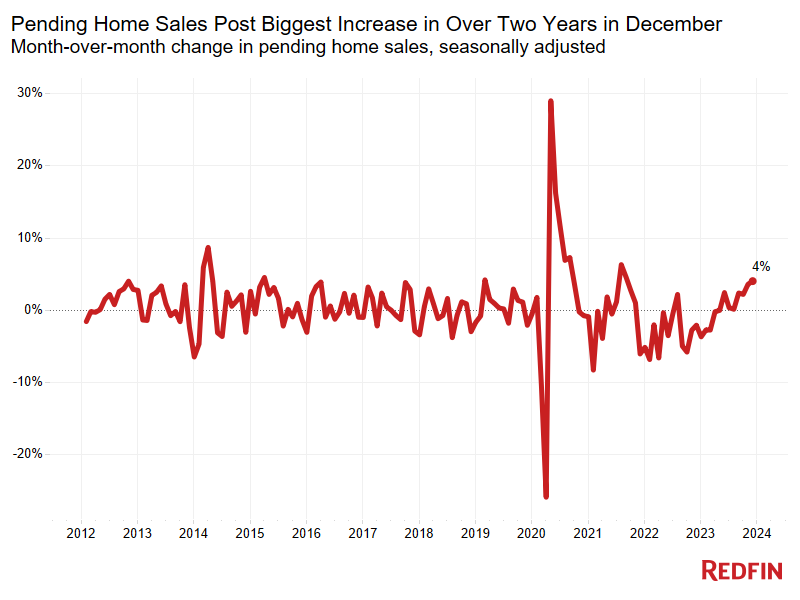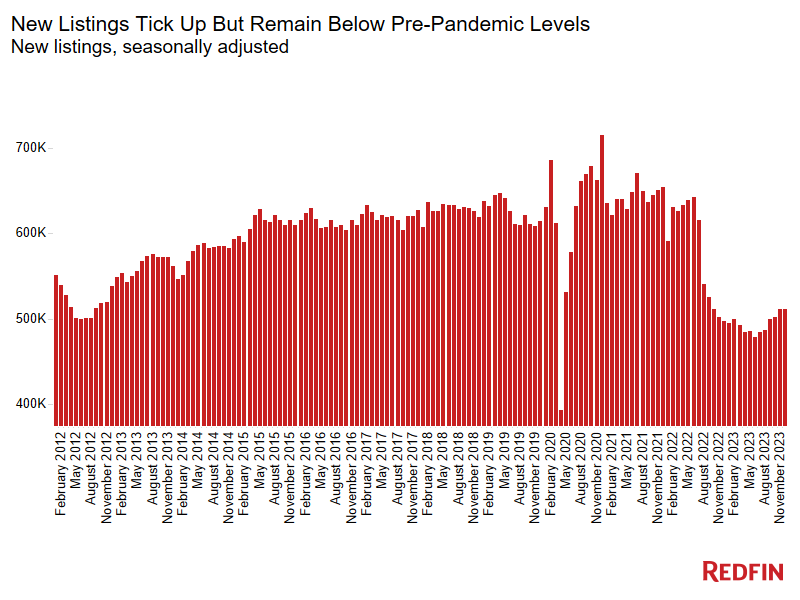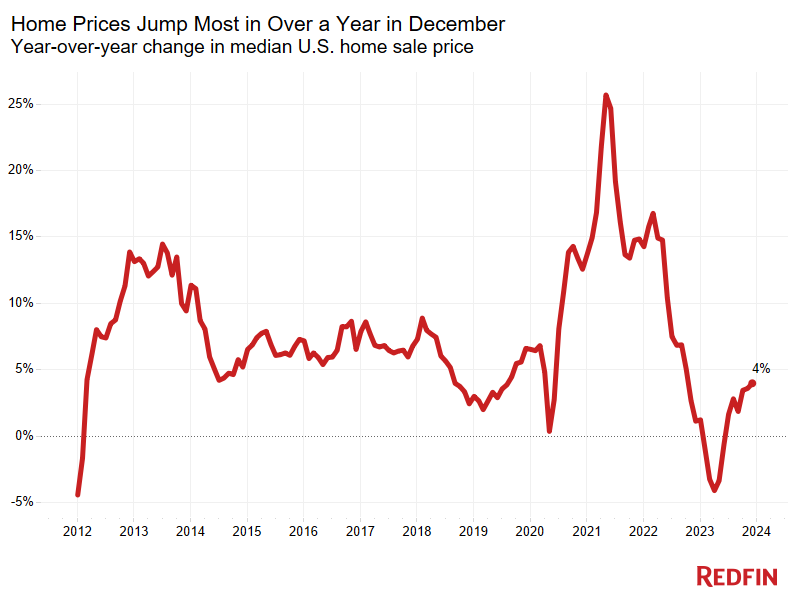Pending home sales rose 4.1% month over month in December on a seasonally adjusted basis—the biggest increase since September 2021—to the highest level in more than a year. They climbed 5.9% from a year earlier, the biggest annual gain since June 2021.

Pending sales jumped because a steep drop in mortgage rates lured buyers to the market. The average 30-year-fixed mortgage rate fell to 6.82% in December from 7.44% in November, the biggest monthly decline since 2008. Buyers who were casually looking when rates were above 7% are now getting serious, Redfin agents say.
The dip in mortgage rates has also brought sellers off of the sidelines, though they haven’t returned with as much intensity as buyers, likely because a majority of them don’t want to give up the ultra low mortgage rate they scored during the pandemic. New listings rose 0.1% month over month to the highest seasonally adjusted level since September 2022, and were up 2.7% year over year—the largest increase since July 2021.

While housing supply has ticked up, it remains below pre-pandemic levels. Active listings, or the total number of homes for sale, rose 3.1% month over month on a seasonally adjusted basis but fell 5.1% from a year earlier.
“We’re definitely seeing an uptick in activity from both buyers and sellers,” said Abby Alwan, a Redfin Premier real estate agent in Austin, TX. “I have two listings in the suburbs that six months ago would’ve sat on the market. But all of a sudden, buyers are coming out of the woodwork thanks to lower rates. More folks are looking to have conversations about what they need to do to enter the market now that they’ve seen improvement in the market.”
It’s worth noting that while demand jumped in December, January is off to a slower-than-expected start, likely due to severe winter weather. Redin economists expect the market to pick up as spring approaches, so long as mortgage rates don’t shoot up.
The median U.S. home sale price climbed 4% year over year to $403,714 in December, the biggest annual increase since October 2022, and fell 1.1% month over month. Please note that home price data is not seasonally adjusted, and it is not unusual for prices to slow from a month earlier in December.

The recent uptick in homebuyer demand is likely contributing to the rise in housing prices, but the primary driver of price increases is America’s persistent shortage of homes for sale, which is fueling competition in some areas.
“Bidding wars are happening again, but they’re much more reasonable than they were during the pandemic homebuying frenzy,” Alwan said. “Houses are getting between one and five competing bids, and instead of offering one or two hundred thousand dollars over the asking price, competitive buyers are offering 3% to 5% over.”
Note: Data is subject to revision
Data in the bullets below came from a list of the 91 U.S. metro areas with populations of at least 750,000. Select metros may be excluded from time to time to ensure data accuracy. A full metro-level data table can be found in the “download” tab of the dashboard in the monthly section of the Redfin Data Center. Refer to our metrics definition page for explanations of metrics used in this report. Metro-level data is not seasonally adjusted.
Data below came from a list of the 50 most populous metro areas.


